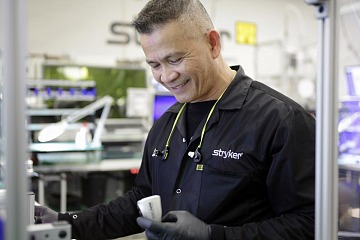Benchmarks & Trends, Best Workplaces, Diversity & Inclusion, Innovation
72,094 employees have spoken: Cisco is the 2019 World’s Best Workplace when it comes to providing a great workplace culture.
In our Building A Globally Great Workplace webinar, Macy Andrews, Senior Director, Global University Recruiting and Employer Branding at Cisco shared how the company earned this significant recognition.
While we couldn’t get to every question during the live webinar, Macy and Great Place To Work® culture experts took time to weigh in on popular questions for you here.
1. What kind of employee recognition programs do you use?
When it comes to recognition programs, Great Place To Work recommends looking at the “how” rather than the “what.” Five elements define authentic recognition.
First, be specific with your praise. Recognition is meaningful when it is tied to an accomplishment. Second, give credit soon after the employee’s work win. Third, express your thanks in more ways than money. Team celebrations and words of affirmation go a long way.
Fourth, recognition can come from anybody – employee shout-outs can be as motivating as manager recognition. And fifth, they are connected to the organization’s bigger picture.
2. Which workplace culture initiatives take the least amount of time to implement?
“Culture initiatives that are the smoothest to implement are those created in response to employee feedback and that management supports," explains Great Place To Work® Strategic Advisor, Matt Bush. “When leaders throughout the organization don't understand the value programs add, they can fail.”
Many practices can theoretically be "implemented" overnight, but what's more important is that they are sustainable. Employers could, for example, start cross-collaboration lunches at a week's notice. Still, without buy-in and formal systems of accountability, these lunches will probably wither away by the next month.
“If you want to ensure sustainable cultural change, focus less on how quickly you can do it and instead on what will address the needs and goals of your people that leaders (most importantly at the very top!) can get behind, “ says Matt.
3. How do you measure the success and impact of individual programs, as well as collectively?
With a culture management platform, you can pinpoint specific aspects of your culture. Survey your employees to understand what programs have impact and which ones are not worth continuing. Use pulse surveys to see how employee experience trends and shifts over time with the advent of certain programs.
4. Do you do anything to identify “at risk” employees before they leave?
It's almost impossible to (nor do we advise) singling out "risky" employees. We recommend looking at aspects of your work culture that might be leading to disengagement.
Use employee feedback to assess how much your employees feel their workplace is psychologically healthy. Do employees believe management shows sincere interest in them as a person?
Does your team express willingness to give extra on the job? And of course, do they want to work at your organization for a long time? You can measure all these aspects of your culture with the research-backed Trust Index survey (pictured below).
5. Is the physical office space important? Is the experience consistent across Cisco's global offices?
"We created a framework called Our People Deal, which is all about consistency of employee experience regardless of where you work in the world," explains Macy. "We took a global approach to the workplace – our WPR leadership understood the voice of the employee and took a consistent approach.
"While some offices were upgraded entirely, others were tweaked, and some had walls painted. But when we refurbished the offices, we didn't just repaint them with our standard corporate colour. Instead, we engaged the site employees and turned it into a great experience.
"Some elements were critical, and a no-brainer for us, such as every site having a safe, clean, welcoming private area for nursing mothers. Dedicated nursing rooms with fridges for milk storage and other comforts are at Cisco offices around the world.
"We also believe strongly in collaboration, so we have flexible spaces for groups to dynamically come together to work. We also know there are moments when your work might require quiet thinking time. We have soundproof rooms built for one, or larger rooms for team discussion. The key is flexibility and variety."
6. If you have a lot of contractors how does that work with equality?
Employers with contractors must ensure a certain level of mutual respect and trust. Contractors want to feel connected to both the business and their co-workers. Often managers go straight to training their contractors, skipping introductions to colleagues or an explanation of the company’s mission.
Employers can increase trust among contractors by relaying opportunities for growth, taking time to recognize great work, including them in social events and all-company meetings, and being flexible.
In other words: a great company culture keeps everyone – no matter their status or role – involved, motivated and excited.
7. Is it possible to get Great Place To Work-Certified on a global scale?
It's easy to run a global survey using our culture management platform, Emprising. You can use it to survey your employees in more than 60 countries and 40 languages.
As every multinational organization is unique, give Great Place To Work a call today to discuss how we can help you earn recognition for your great workplace culture around the world.
8. How do ideas and initiatives flow? Who drives change in the organization?
Cisco knows that innovation and change can come from any person in any position on any team. They don't pigeonhole their employees into pre-assigned sets of functions. "Whether you were in HR or you were in the AI machine learning team of our engineering organization, innovation is everywhere from our employees," said Macy.
Cisco created programs specifically for harnessing human potential at every corner of the organization. "We developed the Everywhere Challenge, which happens once a year," explained Macy.
"Employees get the ability to submit their ideas, and they can put together action teams to further their ideas through various stages and milestones of the Challenges. At the end, employees vote for which one they think is really impressive. Employees with winning concepts can be taken out of their job for a period to work on their idea."
"Innovation can happen from anywhere, and so this challenge started to fuel a lot of that," said Macy.
Initiatives flow from the top, the bottom, and everywhere in between when you give your people mental, emotional, and temporal space. Space for employees to be creative, take risks, and come up with ideas that advance the organization.
"Our goal is to develop a workplace that unlocks all employees' potential in the unlimited world of our functions and regions. That approach makes us the best that we could be for our innovation, for our technology, and most importantly for our employees."
9. How do companies use Great Place To Work Certification in their recruiting process?
Culture plays a significant role in where candidates decide to work. And many companies use Great Place To Work Certification™ in their recruitment strategy. Certification signals that your employees approve of your organizational culture and your company's leadership.
Every Great Place To Work-Certified company earns a digital Certification badge. You can use it all year to remind employees, partners, and the public about your achievement.
Include the badge on social profiles, print it on swag, and proudly display it on your job postings and career sites. Aside from employer branding, Certification has many as other benefits.
10. What are the key drivers of employee engagement at Cisco?
"The focus is on Our People Deal to deliver more "Best Days" at Cisco," says Macy. "We learned from our employees what a Best Day looked like and then we set about understanding how to create more of that consistently.
"We built Our People Deal as a two-way agreement – what Cisco would deliver to employees and what Cisco expected in return. One of the ways Cisco delivered on its side of the deal was via the initiatives we bundled under the 11 Moments that Matter."
11. What is the best thing to do when you believe an employee is negatively affecting the company culture?
"Values are the foundation of aligning behaviors with desired company culture, " says Laurie Minott, Great Place To Work Partner & Senior Strategic Advisor. "Clearly define actions that match each value and use them to guide decisions."
Positive reinforcement of values is also critical to keeping a culture healthy. "Sharing stories of values in action as part of every meeting agenda is a powerful way to do this," explains Laurie.
Giving timely feedback and making decisions that emulate the desired culture is critical. If someone is 'rewarded' (i.e., promoted or given recognition) who is not living into the desired culture, it quickly erodes credibility.
If, after sufficient coaching and feedback, an employee still isn't living the values, it may be time to part ways, which also sends an important organizational message.
Did you miss out on our Building A Globally Great Workplace webinar? Join our e-newsletter list to stay on top of our latest research, webinars, and events.














